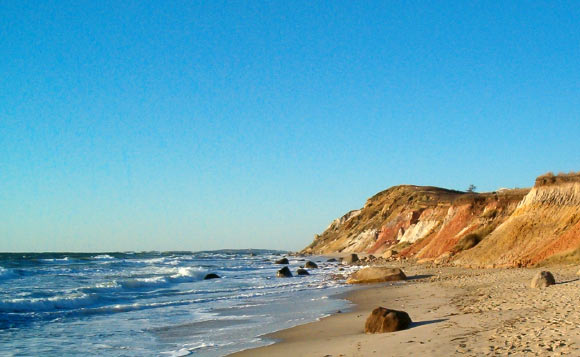According to new research reported in the journal Scientific Reports (full paper), infertile clay in oceans of the early Earth may have been the birthplace of life.

Scientists say that clay in ocean water may have been the birthplace of life on our planet. Image credit: Jared / CC BY-SA 3.0.
“We propose that in early geological history clay hydrogel provided a confinement function for biomolecules and biochemical reactions,” explained senior author Prof Dan Luo from the Cornell University’s Kavli Institute.
In simulated ancient seawater, clay forms a hydrogel – a mass of microscopic spaces capable of soaking up liquids like a sponge.
Over billions of years, chemicals confined in those spaces could have carried out the complex reactions that formed proteins, DNA and eventually all the machinery that makes a living cell work.
Clay hydrogels could have confined and protected those chemical processes until the membrane that surrounds living cells developed.
To further test the idea, Prof Luo’s team has demonstrated protein synthesis in a clay hydrogel.
The researchers previously used synthetic hydrogels as a cell-free medium for protein production.
“Fill the spongy material with DNA, amino acids, the right enzymes and a few bits of cellular machinery and you can make the proteins for which the DNA encodes, just as you might in a vat of cells.”
Scientists previously suggested that tiny balloons of fat or polymers might have served as precursors of cell membranes. Clay is a promising possibility because biomolecules tend to attach to its surface, and theorists have shown that cytoplasm – the interior environment of a cell – behaves much like a hydrogel.
“And a clay hydrogel better protects its contents from damaging enzymes that might dismantle DNA and other biomolecules,” Prof Luo said.
As further evidence, geological history shows that clay first appeared – as silicates leached from rocks – just at the time biomolecules began to form into protocells – cell-like structures, but incomplete – and eventually membrane-enclosed cells. The geological events matched nicely with biological events.
______
Bibliographic information: Dayong Yang et al. Enhanced transcription and translation in clay hydrogel and implications for early life evolution. Scientific Reports, published online November 7, 2013







